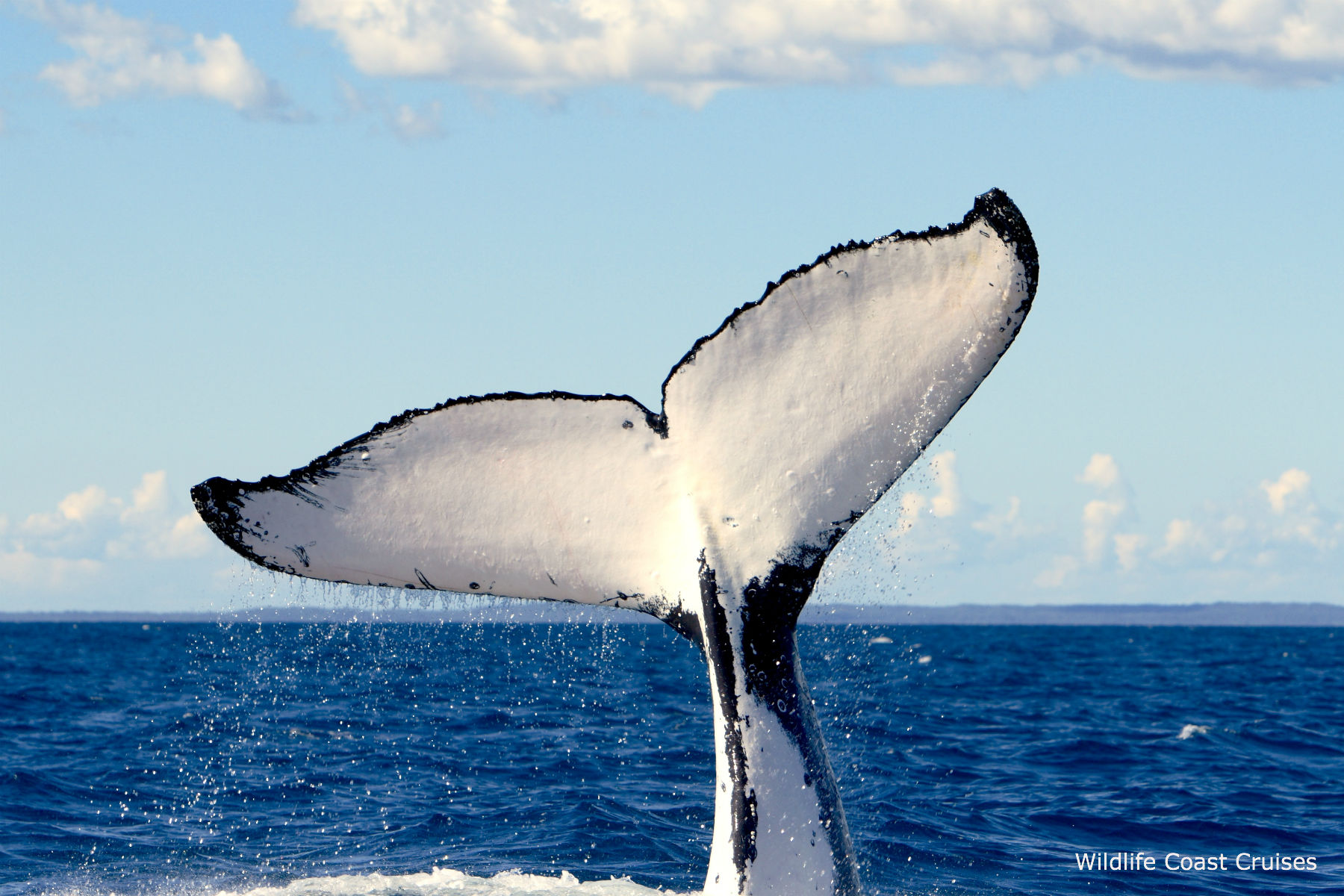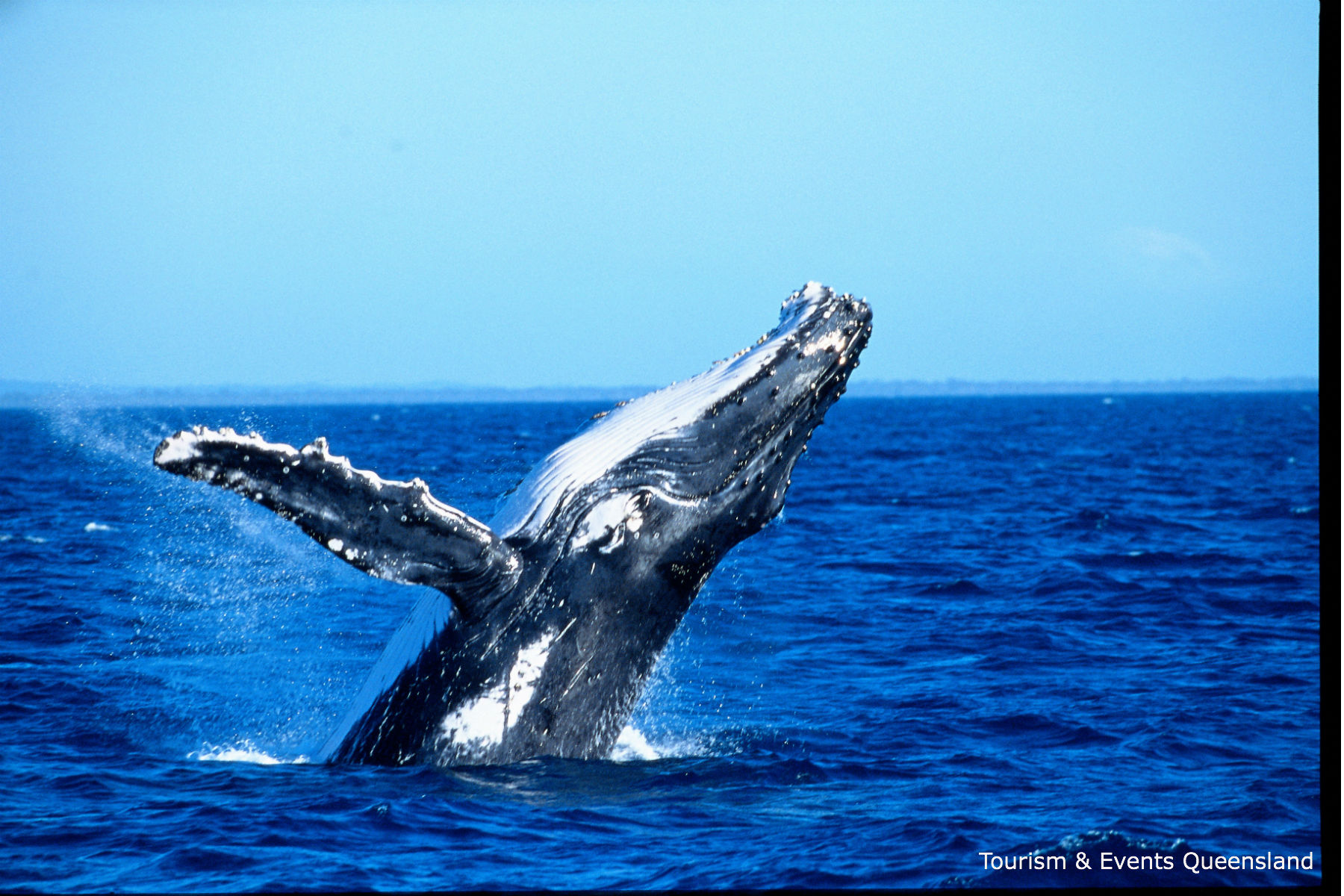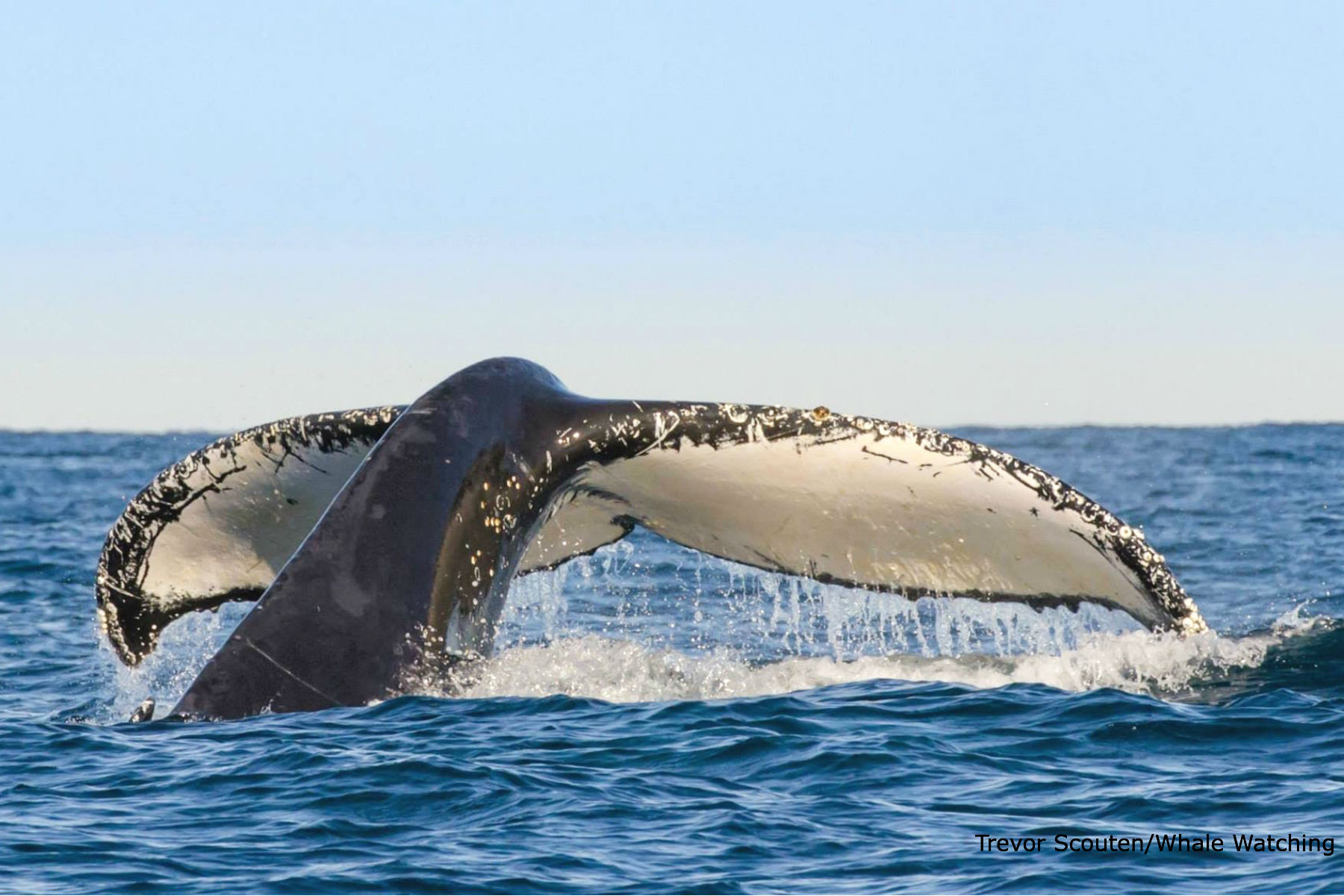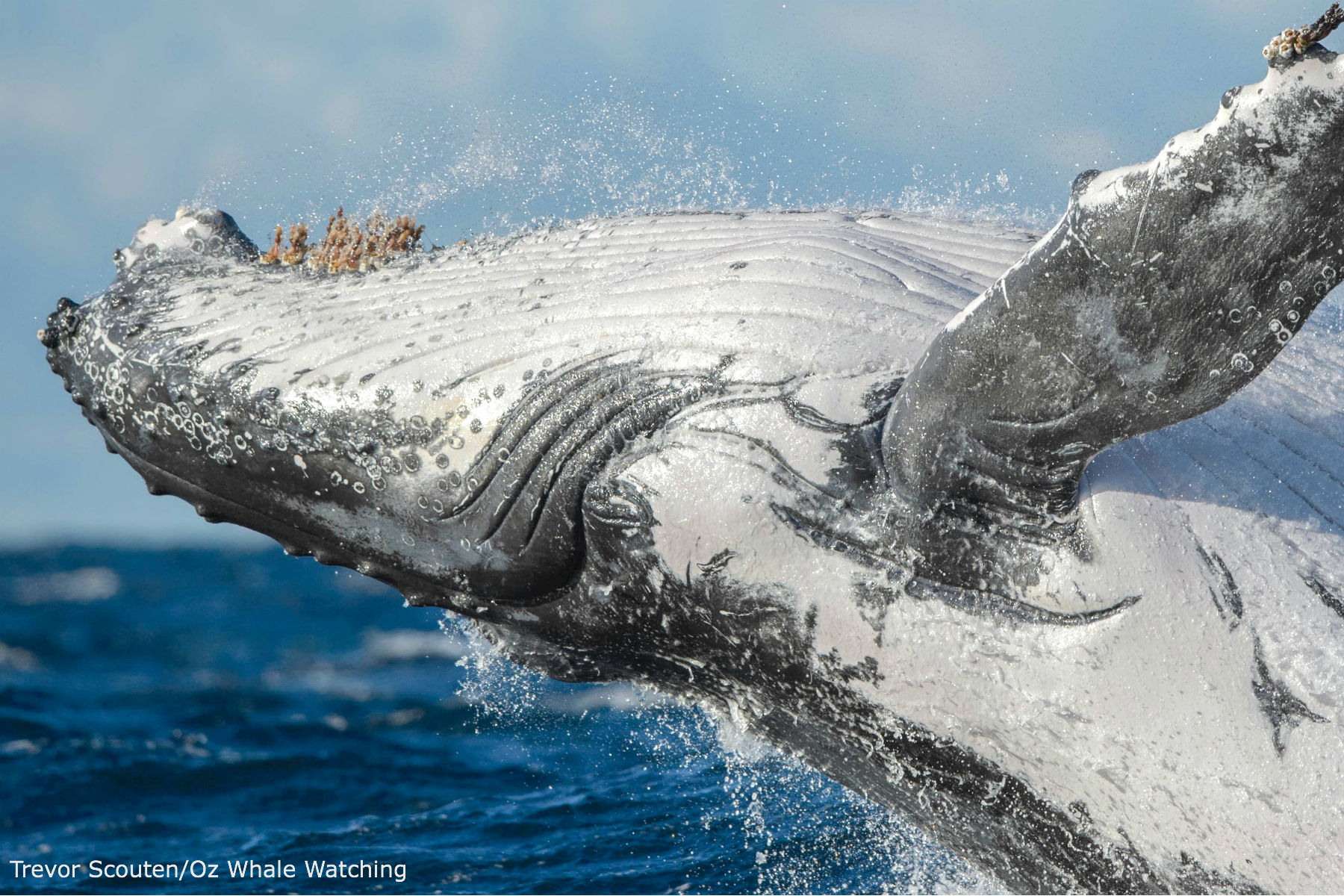Whale Watching
Whale Watching in Australia
Whale Migration
They travel in loose, small social groups depending on whether they are male, young, pregnant etc. the group size is normally no larger than 5 whales. The whales you would see along the Australia Coast make up part of the Southern Ocean Group. Some of them travel along the East Coast of Australia and others travel along the West Coast of Australia.
Mingaloo – the white whale
Everyone breaths a sigh of relief when the first sighting of Migaloo takes place each season. He has been sighted as far north as Cape Tribulation in 2007. Migaloo even has his own website, check it out by clicking the link below.
Whale Facts
- They weigh up to 40 tons
- Up to 6 tons of their weight is blood
- 70% of their time is spent underwater
- Their heart measures between 1.2 to 1.5 metres long and weighs nearly 200kg
- When feeding, they eat up to 1,200 kg a day
- Gestation period is 11-12 months
- Weight of new born calf is 1-2 tons, they drink 40 kgs of milk a day and put on a kilo every hour
- Average life span is 50 years
- Current populations are under half of those pre-whaling.
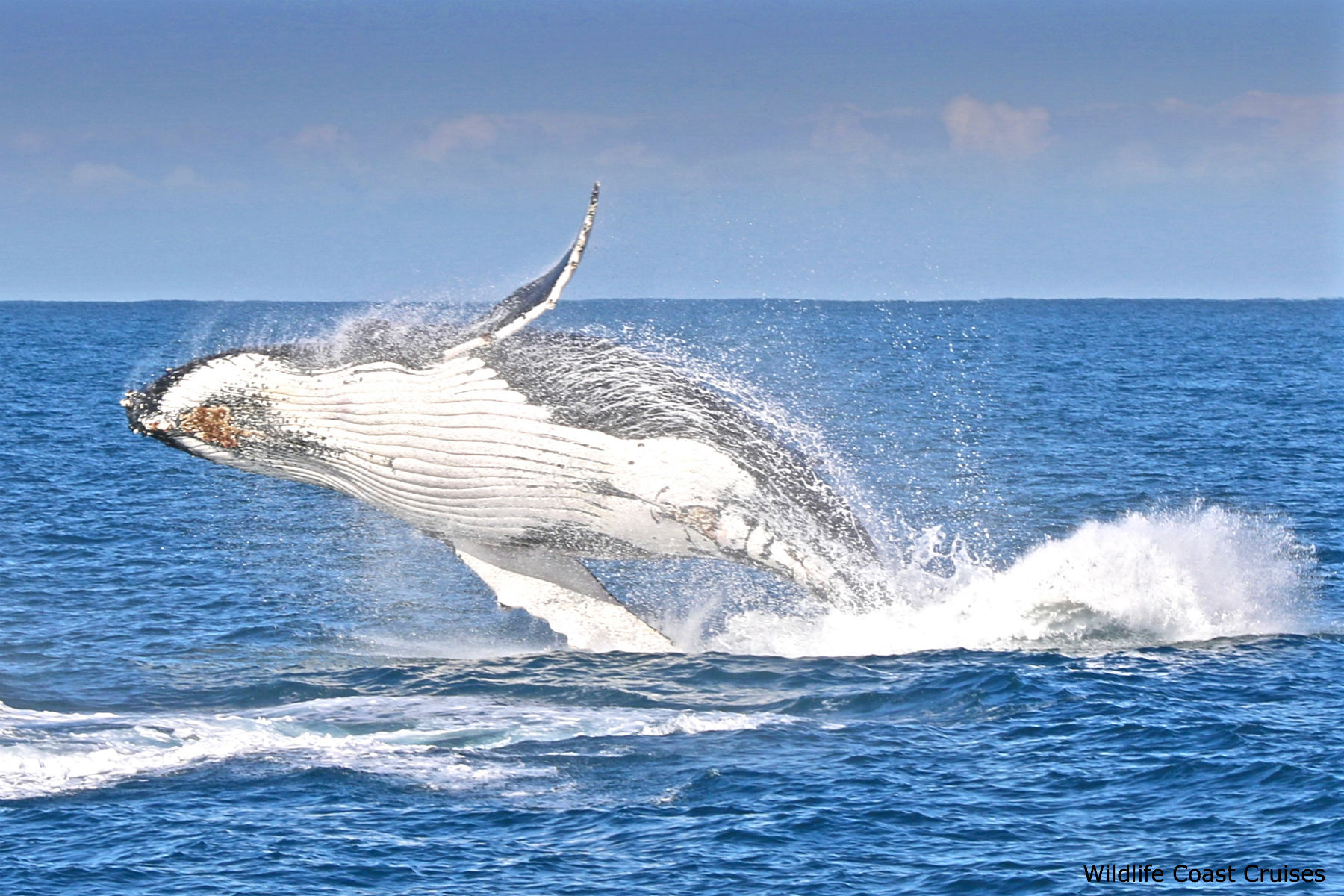
Whale Watching
Queensland
Cairns and the Ribbon Reefs
Whitsundays
Hervey Bay The whales returning from the Great Barrier Reef have a few days rest here. The females will be with their calves
Stradbroke Island There is a whale walk with viewing platforms as well as the 1.1kilomentre walk around The North Gorge at Point Lookout, also with great viewing spots
Moreton Island (Tangalooma)
Gold Coast and Surfers Paradise The whales are usually only a kilomentre or two off the coast. It is also one of the rare points where you will find whales passing through all season and from the middle of August traffic heads in both directions
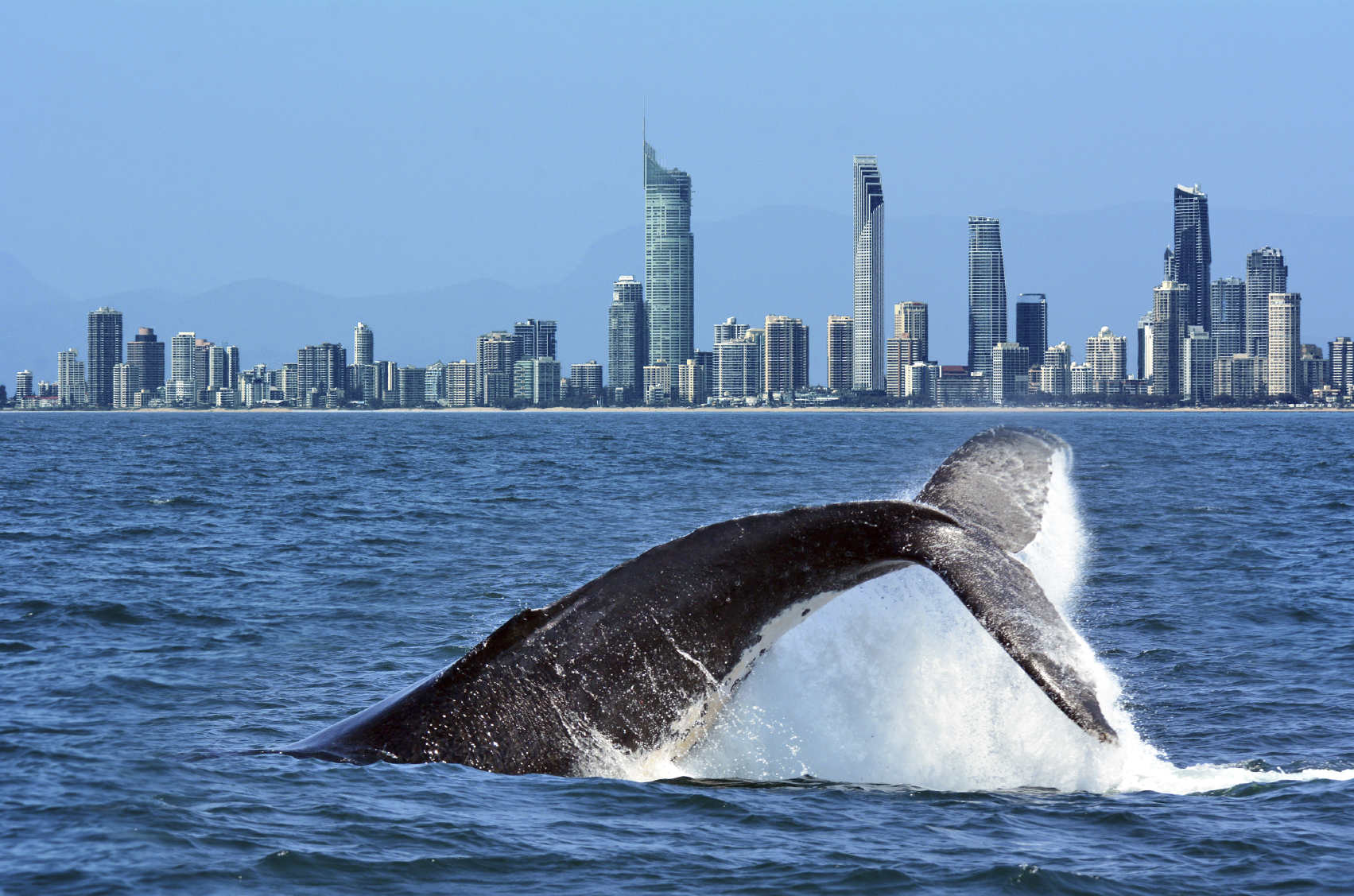
Whale Watching
New South Wales
Coffs Harbour
Jervis Bay
Batesman Bay
Eden and surrounds
